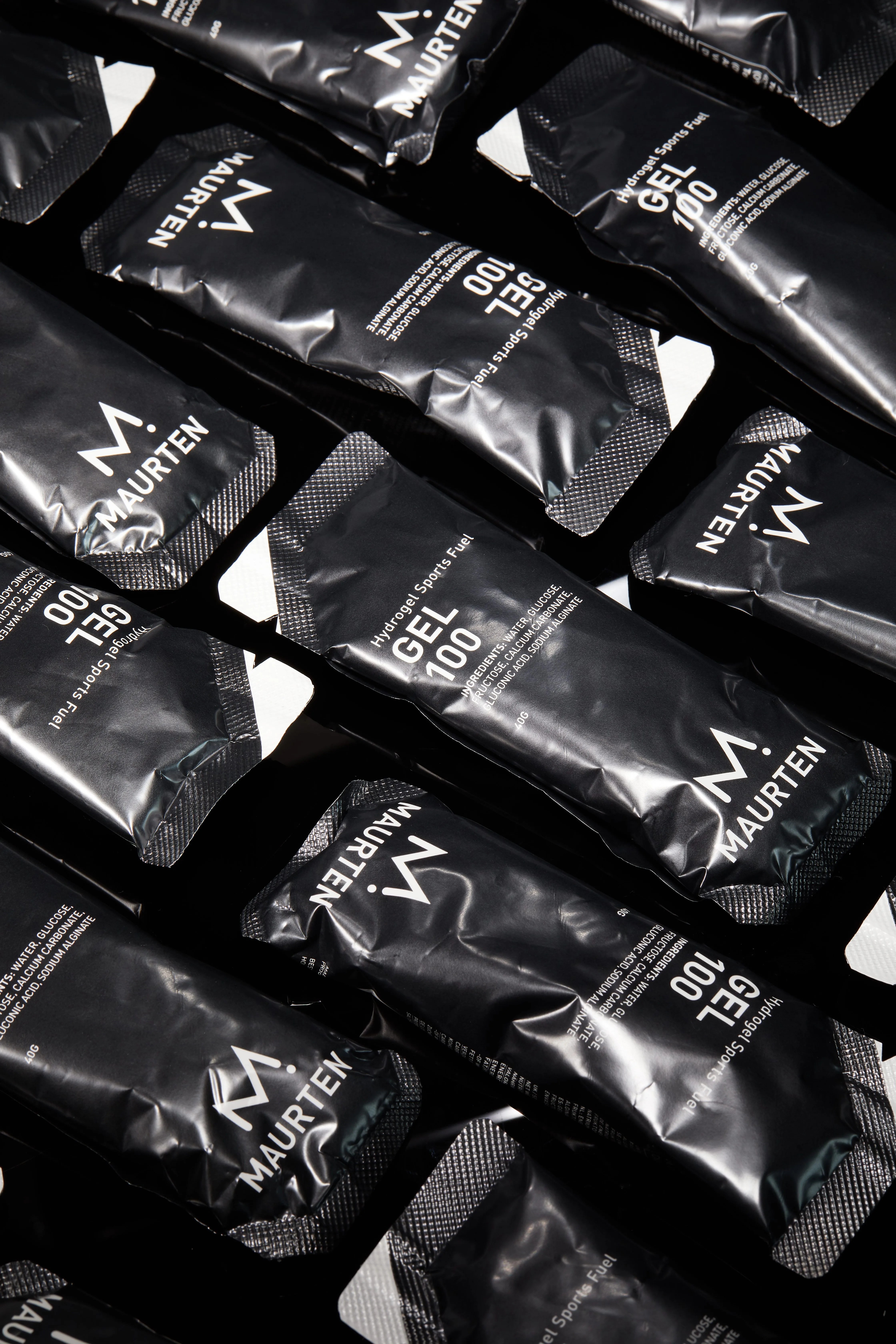This story is part of the GP100, Gear Patrol’s annual index of the 100 best products of the year. To see the full list of products or read this story in print, check out Gear Patrol Magazine: Issue Eight, available now at the Gear Patrol Store.
Fitness is a trend-driven industry and 2018 was par for the course. VR workouts, sleep tracking to boost performance and marijuana-derived supplements all generated buzz this year. But there were some truly head-turning innovations, too, such as a radical new approach to in-race nutrition and a GPS watch with a battery that far outlasts the competition. Whether you’re in search of serious performance gains or simply an upgrade to your home gym, our picks for the year’s best fitness products stood above the fluff by tackling their respective categories with notable advancements — even if a few of them did follow the trends.
Nike Pegasus Turbo
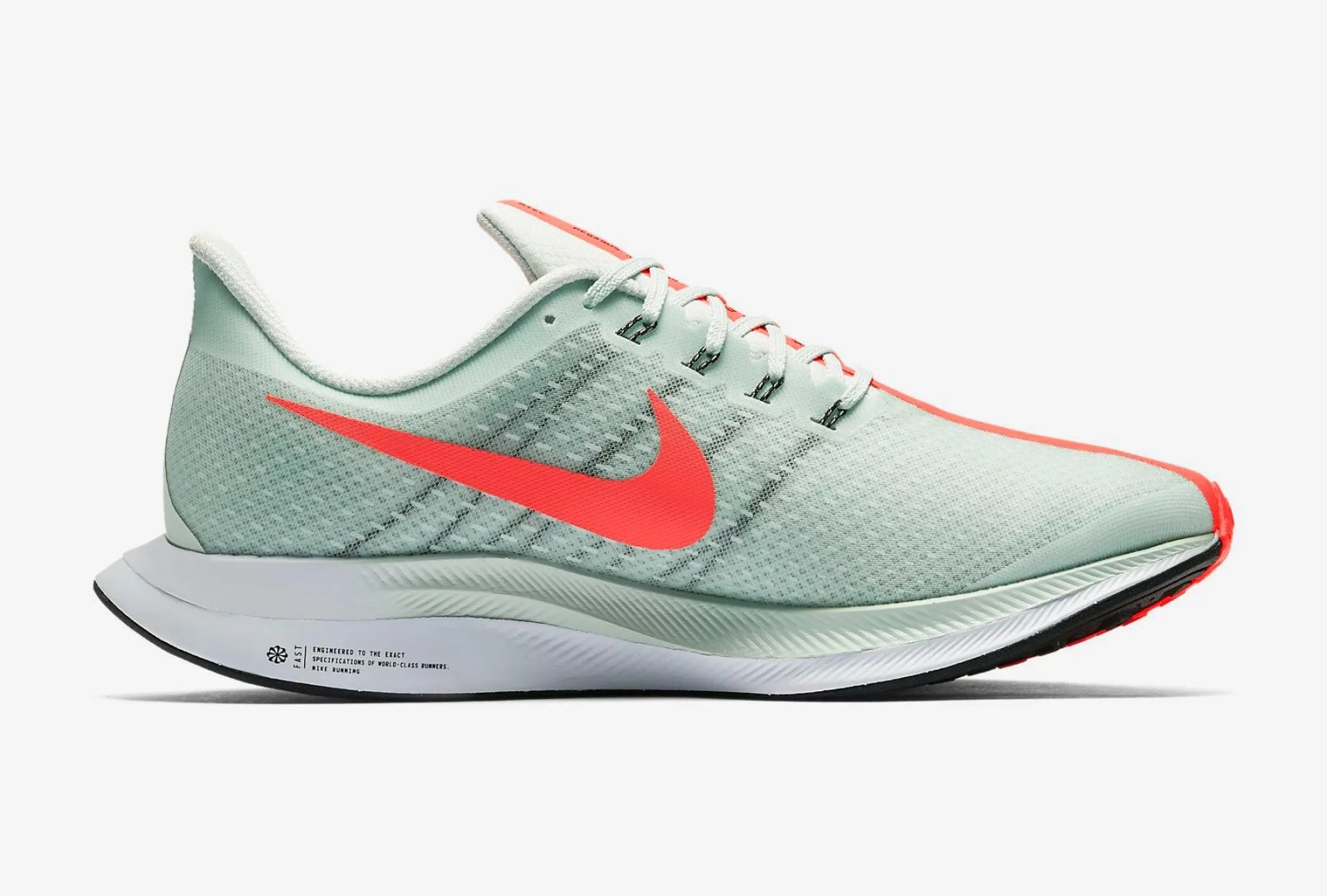 Nike
NikeBuilding a training shoe that makes track workouts fast and long runs springy is nearly impossible. But, Nike did. Enter the Pegasus Turbo, which combines the cushioning in two of its most popular shoes to create a midsole that’s reactive yet durable. These made us feel energized and lighter and are go-tos for elite runners, too. Since the first Pegasus was introduced 35 years ago, it’s become the best-selling running shoe for both serious marathoners and beginner runners, and this iteration is possibly the fastest one yet. — Meg Lappe
- Weight: 8.4 ounces (size 10)
- Heel-to-Toe Drop: 10mm
- Foam: Nike ZoomX and Nike React
Suunto 9
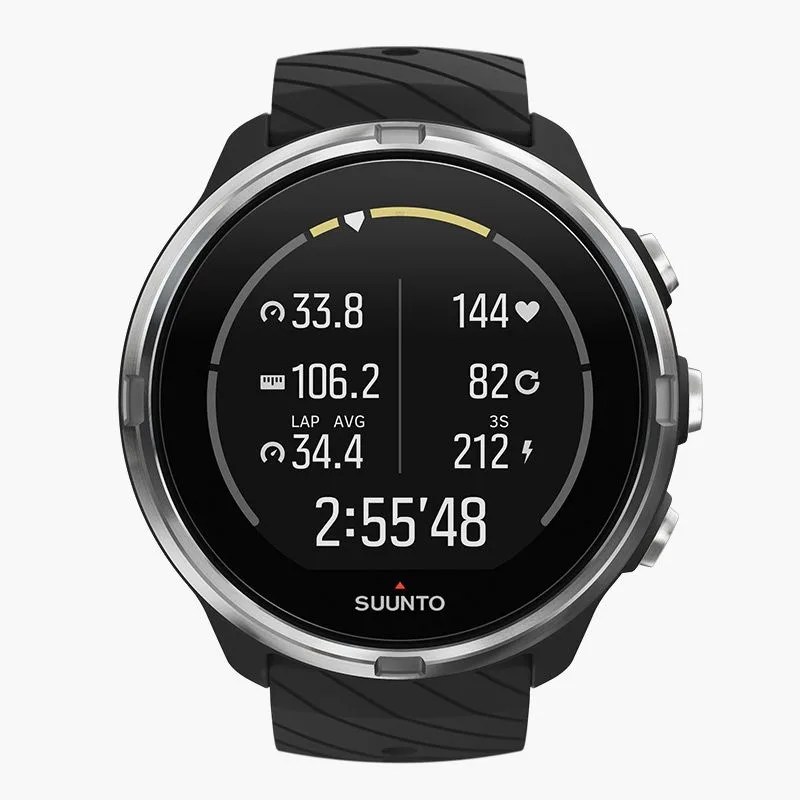 Suunto
SuuntoEliminate the worry over battery life on long hikes or other athletic endeavors with the Suunto 9, a multisport fitness watch that can track data for up to 120 hours while running the GPS. The smart battery-management system is what sets this watch apart — it optimizes depending on the length of your workout and its mode. Distance, pace and heart rate come standard in addition to more hardcore data like EPOC (excess post-exercise oxygen consumption) and PTE (peak training effect), all on a user-friendly color touchscreen. — ML
- Weight: 2.54 ounces; 2.86 ounces (with built-in barometer)
- Battery Life: 25 – 120 hours
- Water Resistance: 100 meters
Peloton Tread
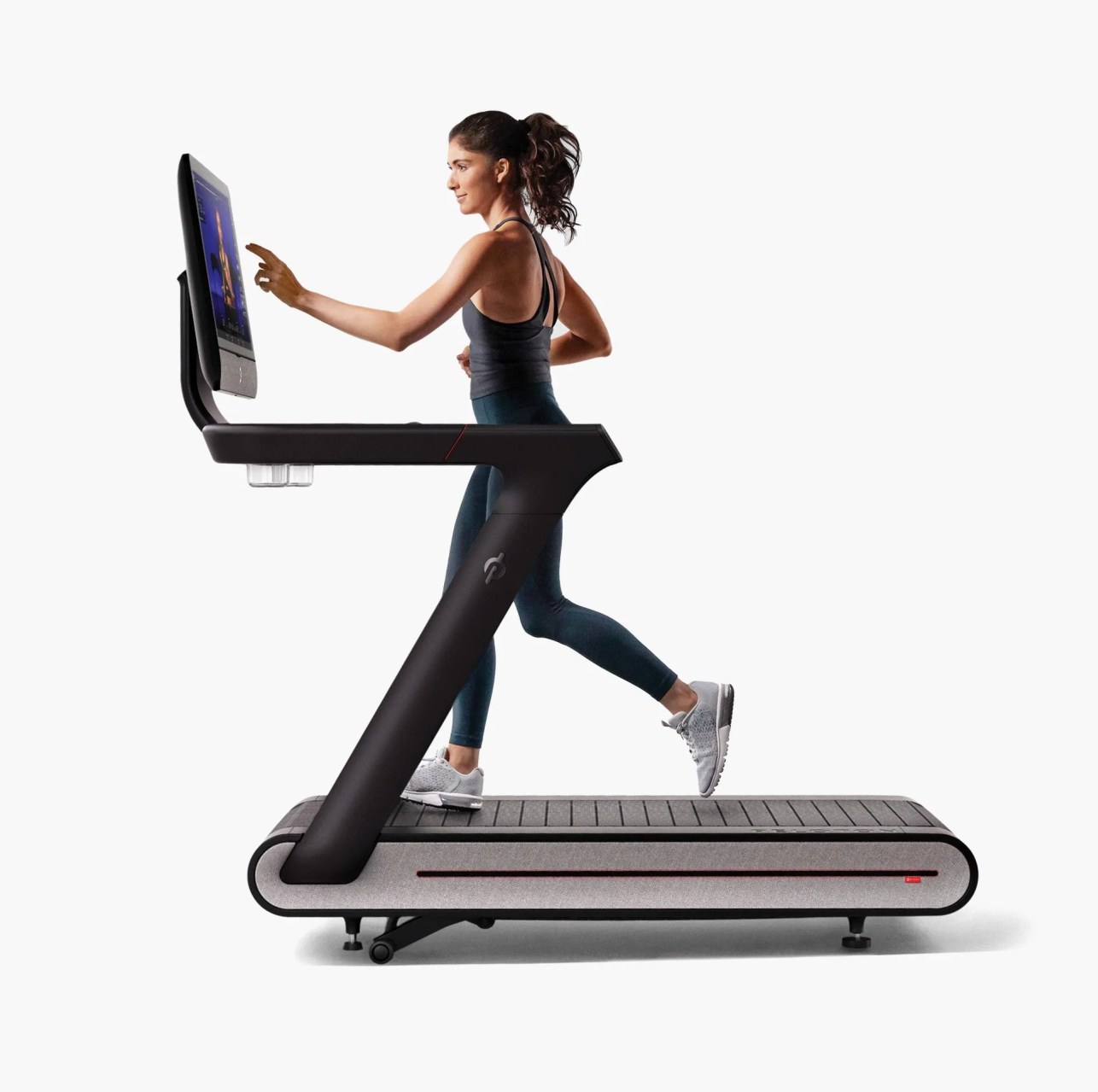 Peloton
PelotonPeloton, the brand known for its high-end stationary bike, is out to revolutionize fitness with the introduction of the Tread, one of the most advanced treadmills ever developed. The machine is built on the idea that the best way to make people more active is to eliminate any excuses and provide new content daily, so boredom isn’t a problem. With nearly one million members, Peloton created a community of riders, and now they are targeting runners. “We knew we were more than just a bike company,” Maureen Coiro, Peloton’s senior hardware product manager, says.
What really sets the Tread apart is its ability to stream classes.
Instead of the bulky, boxy eyesores we’re used to, the Tread is sleek and lacks the cheap plastic of most at-home treadmills. Upgrades include a carbon steel frame, a 32-inch touchscreen offering both on- and off-treadmill workouts from 10 professional trainers, an intuitive control knob to change speed or incline, and ample storage space under the belt for mats and weights. Peloton swapped a belt made of one long piece of rubber for 59 individual slats that make the ride more cushioned and smooth.
What really sets the Tread apart from other at-home workout machines, though, is its ability to stream classes through Peloton Digital. For $39 a month, you get your own private fitness studio. “Peloton is now expanding its socially connected workouts to include running, walking, bootcamp and circuit classes, both on and off the Tread,” Coiro says. Each day, there’s a variety of more than 10 live classes, complete with a leaderboard. Hit the top and the instructor might just cheer you on. — ML
- Dimensions: 72.5 x 36.5 x 72 inches
- Incline: 0 to 15% grade
- Speed: Up to 12.5 mph
Silca Sicuro Titanium Bottle Cage
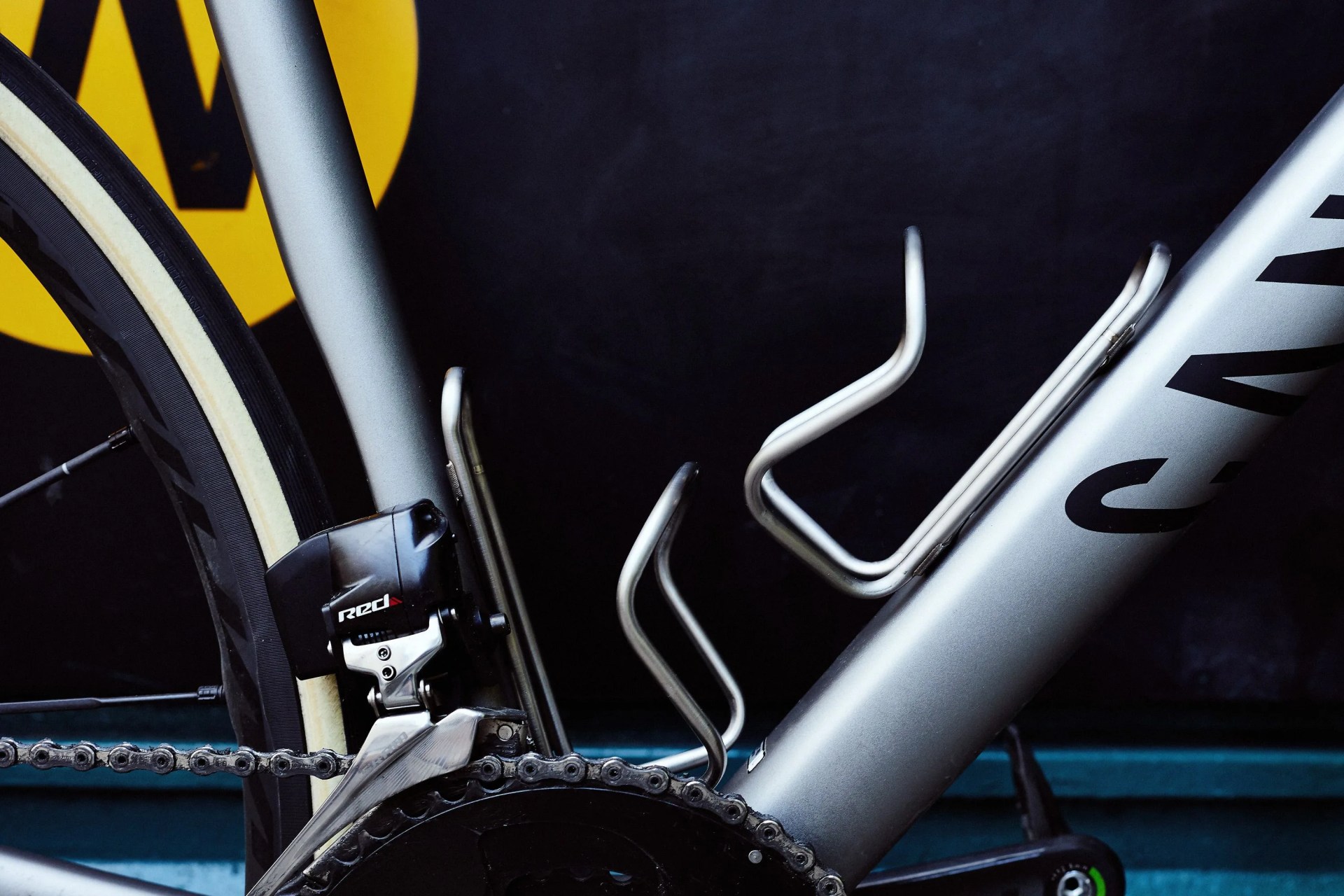 Chandler Bondurant
Chandler BondurantTitanium water-bottle cages are nothing new. In fact, there was an internal debate on whether a utilitarian bike accessory could even be called award-worthy. But Silca’s Sicuro cages convinced us that sometimes small tweaks on simple products can be significant. Elongated mounting holes let you position the bottle just so, while a laser welding technique adopted from the aerospace industry means each one is durable enough for the brand to offer a 25-year warranty. — AJ Powell
- Cage Material: Titanium
- Bolt Material: Titanium
- Weight: 29 grams (without bolts)
Specialized S-Works Venge
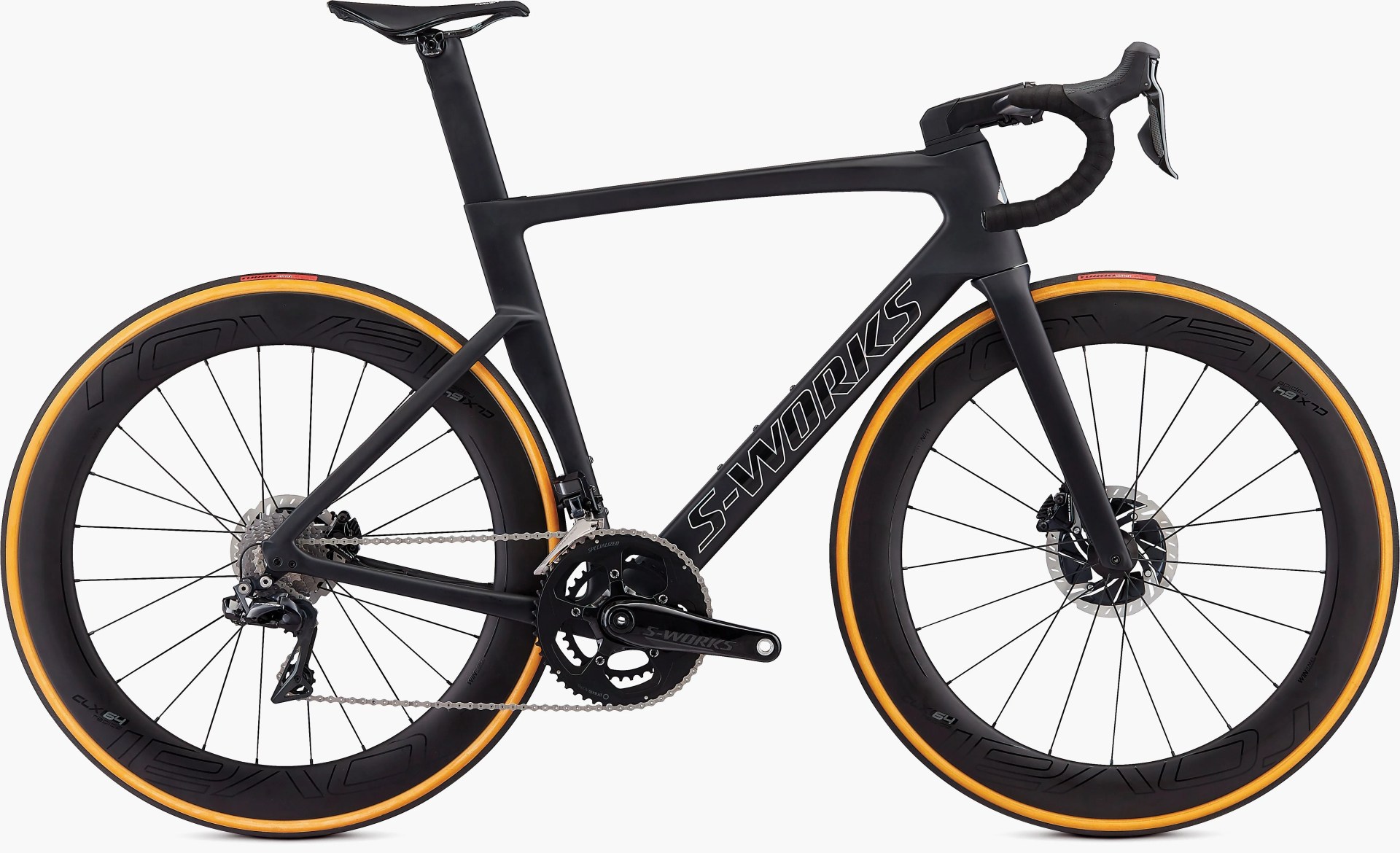 Specialzied
SpecialziedWhen the new Venge came out, we called it “the Ferrari of bikes,” and we’re sticking to that. It’s considerably faster than its predecessor (already the fastest bike on the market) and it won multiple stages at the Tour de France. But it’s the frame’s design story that really grabs us: in lieu of the wind tunnel, Specialized enlisted custom software to analyze thousands of tube shapes for optimal aerodynamics and stiffness. Welcome to the future of bike design. — AP
- Weight: 15.65 pounds (built bike)
- Years in R&D: 11
- Sponsored Riders: Peter Sagan, Tom Boonen
Mirror
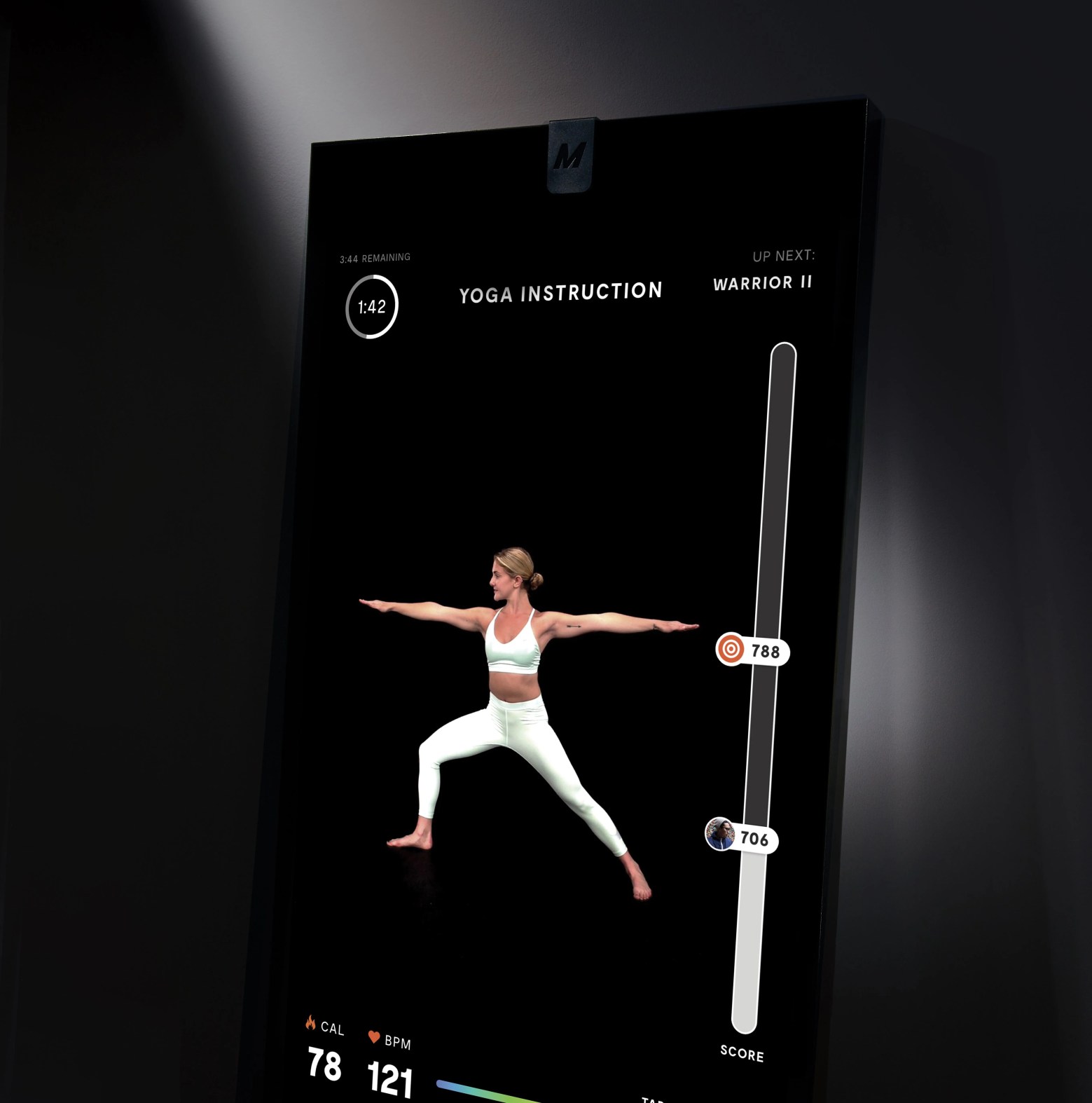 Chase Pellerin
Chase PellerinMirror, mirror, on the wall, who’s the fittest of them all? That is, more or less, the question that gym-goers have been posing for decades, as they’ve pumped iron, busted out reps and checked their form in front of plain, old-fashioned “dumb” mirrors at fitness centers around the globe. But what if that mirror not only had an answer for you, but also played an integral role in shaping your fitness by making high-quality group fitness classes more convenient, more affordable and — via seamless, real-time exercise customization — better optimized so you can achieve your goals as quickly as possible?
That’s the premise behind Mirror, a new high-end fitness device that brings the essential components of a great studio workout — variety, personalization, interactivity and community — into the convenience of your home. Invented by Brynn Putnam, who owns a chain of New York-based boutique fitness studios called Refine Method, Mirror is a technology-packed workout mirror that’s perfectly positioned to take advantage of this year’s biggest fitness trend: virtual fitness.
Virtual fitness is rife with shortcomings. But they haven’t stopped the phenomenon from exploding in popularity.
Like all emerging technologies, virtual fitness is rife with shortcomings. But they haven’t stopped the phenomenon from exploding in popularity worldwide, as fitness clubs, equipment manufacturers and content creators scramble to make high-quality group fitness classes available to their clients anytime, anywhere. Thanks to increasing competition, production values are higher than ever, with cinematic lighting and slick camera work highlighting more professional, prime time-ready trainers. But when Putnam first came up with the idea for Mirror in 2015, the space was a blank slate.
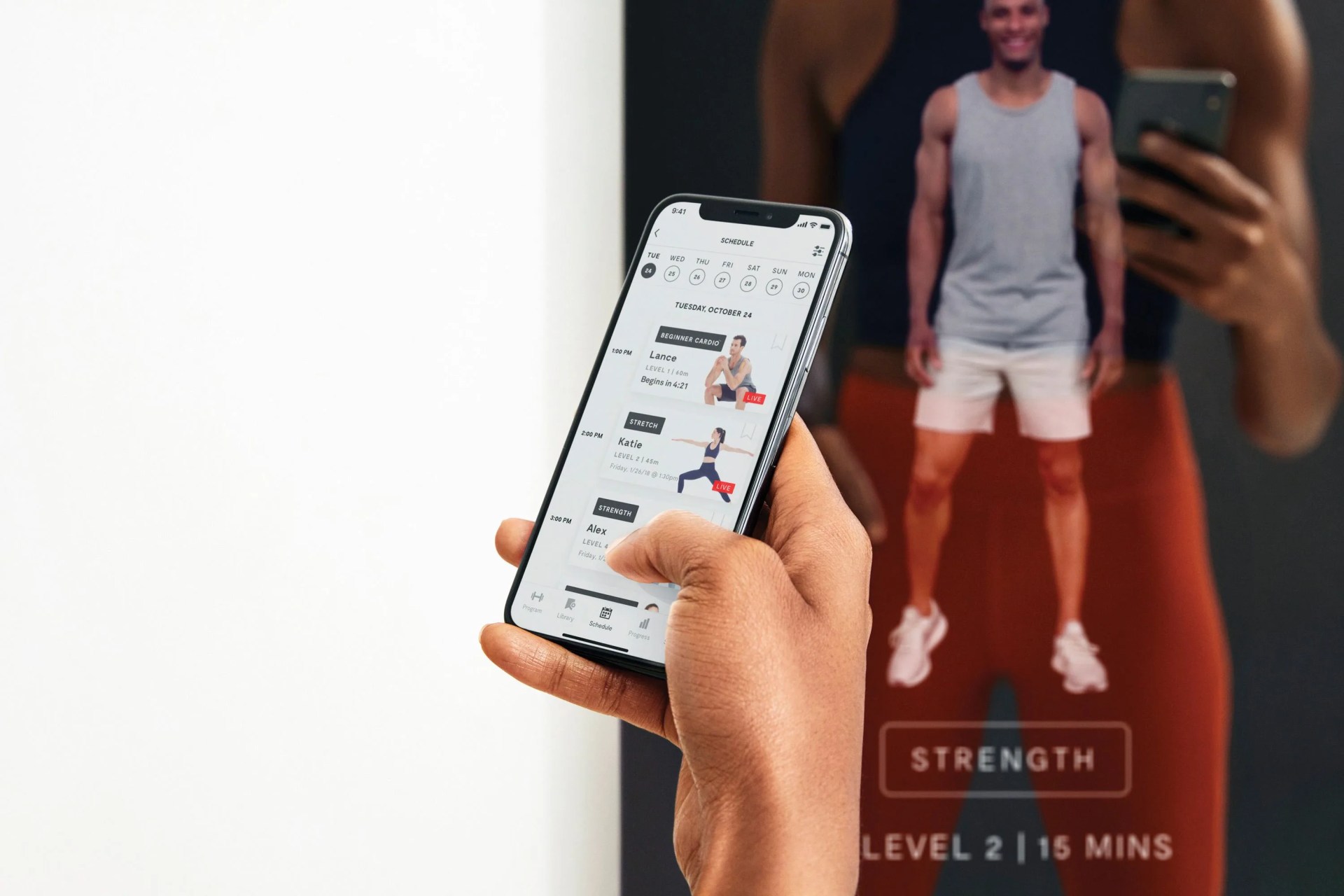 Mirror
MirrorAt the time, she was newly pregnant, and had just opened Refine’s third location. Life was getting hectic, to the point that, ironically, she couldn’t find time for fitness. “I found myself the owner of a gym, struggling to squeeze in a workout,” Putnam recalls. When she began exploring in-home workout options, the space constraints of her New York City apartment immediately ruled out a treadmill or exercise bike. She cycled through several virtual fitness options, “but found the experiences weren’t really immersive or interactive.” Even when the class content wasn’t stale, she was still trying to digest it via a tiny, hard-to-see screen that made following along awkward at best, and many times nearly impossible. And, for the most part, there was scant personalization of exercises to match her unique prenatal needs. “I always felt like working out in-home meant sacrificing quality for convenience,” she adds.
Around the same time, she’d installed full-length mirrors in her fitness studios, and received rave feedback from her clients. “They said it was the best thing we’d done all year, giving them the visual feedback of seeing their form in the mirror,” Putnam says, “and they found it really inspiring to see themselves pushing their bodies through a workout.” The proverbial light bulb lit in Putnam’s head, and she realized that she could take the technology from a streaming app and put it inside a mirror (which is very screen-like, after all) to create a more realistic, interactive gym that fits into any home. Within months, she’d built a prototype in her kitchen using a two-way mirror, a monitor and a Raspberry Pi computer to program the software.
“They found it really inspiring to see themselves pushing their bodies through a workout.”
Three years of development and nearly $38 million of venture capital later, the experience she envisioned is being realized, and it’s remarkable. Imagine standing on a yoga mat in front of a sleek, body-length mirror in your living room, suited up in workout clothes and a heart-rate strap, with a sweat towel and water bottle close at hand. At a predetermined time, you switch on Mirror to join a live class and see a trainer standing in front of you on the full-size LCD display, as if she’s in your living room, too. She introduces herself, outlines the HIIT class ahead, then launches into some warm-up exercises as upbeat music pumps from the surround-sound speakers. At the bottom of the display, you can check which of your favorite fitness pals have joined the class. Once the workout is underway, your heart rate is monitored to ensure you’re hitting the right intensity levels.
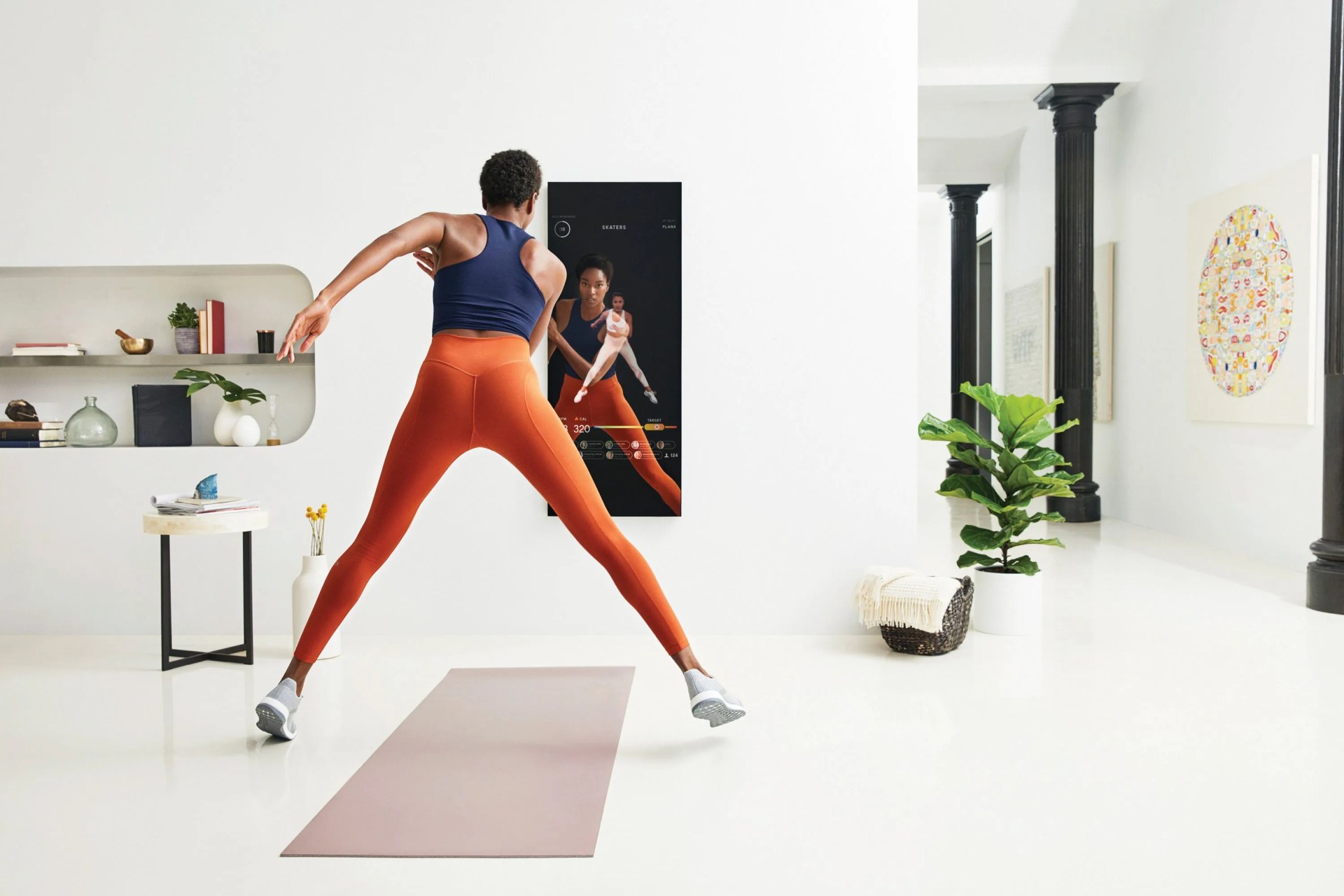 Mirror
MirrorAnd it goes much further. If you have an injury, say, or you’re pregnant, or just not fit enough to perform an exercise, Mirror serves you alternatives seamlessly in real time, or provides personalized text-based form tips to ensure that you’re doing each exercise safely and effectively. At the end of class, you simply roll up the yoga mat, and your workout studio transforms instantly back into a living room. All of your data is stored in a smartphone-based app for later analysis, and a post-workout survey helps Mirror further tailor future classes.
Mirror keeps its content fresh by streaming more than 50 new live classes per week across a handful of categories, all of which are added to the growing library of on-demand classes that are available 24/7. On top of that, personal training will be added to the platform in early 2019, making full use of the front-facing camera and omnidirectional microphone to facilitate two-way “face-to-face” communication for form guidance and critiques.
The “magic” behind Mirror’s real-time form tips and exercise modifications is a proprietary algorithm that blends a combination of trainer expertise, user-profile data (a weight-loss goal or injury, for example), biometric data via the heart-rate strap and user feedback surveys. “When our trainers write their class plans, they also write modifications for all of the injuries that we’re culling, as well as advancements and regressions,” Putnam says. “The Mirror, then, is pulling information from your profile and heart rate to determine whether or not you should be served alternate content; sometimes it’s just a text-based note reminding you, say, to keep your knees pointed forward because you have a knee injury and it’s an exercise where you need to be particularly careful.” The end result is, ideally, a seamless workout experience that’s optimized to your ability level and skill set every single time.
“The instructor is really there to provide a sense that you’re not alone.”
With all of that whiz-bang computer-generated customization, though, it can be easy to lose sight of the real-life trainer, who expertly crafted the class and whose personal touch factored so prominently into the all-knowing algorithm. Apart from that, says Putnam, “The instructor is really there to provide a sense that you’re not alone.” And that gets at the biggest flaw with the Mirror experience to date. The community aspect is still lacking. There’s very little real-time interaction between trainers and students — apart from occasional “shout-outs” to individuals — or between students, even in live classes. You can see the usernames of others who are taking the class, but can’t actually see them or easily interact with them. We suspect it’s only a matter of time before improvements are introduced here, as Putnam hints at new social and workout features that will utilize the front-facing camera and, presumably, offer the option of more direct interactivity.
“I think we’ve reached a point where we’re able to deliver — and I’m saying this as someone who’s taught tens of thousands of people in person — a more personalized, tailored experience via technology than I can in real life,” Putnam says. And perhaps she’s right about that, given the limited ability of a single trainer to adequately cater to every single medical condition and fitness level in a given class, while performing exercises and offering expert advice on form.
At $1,495, Mirror is an investment, but its $39 monthly subscription fee covers up to five users, making it far cheaper than classes at a boutique fitness studio. “With the logistics and low cost of working out in-home, it’s ultimately more convenient and more affordable,” Putnam concludes. “If the experience is better, easier and cheaper, I think more people will make the calculus to spend more time at home.” She’s almost certainly right about that, and Mirror is far and away the best option available. It may not be magic, but it could well make you the fittest of them all. — Peter Koch
- Subscription Cost: $39 per month
- New Content Frequency: 50 live classes per week
- Display: 40-inch HD 1080p, with 178-degree viewing angle
District Vision x Salomon Mountain Racer
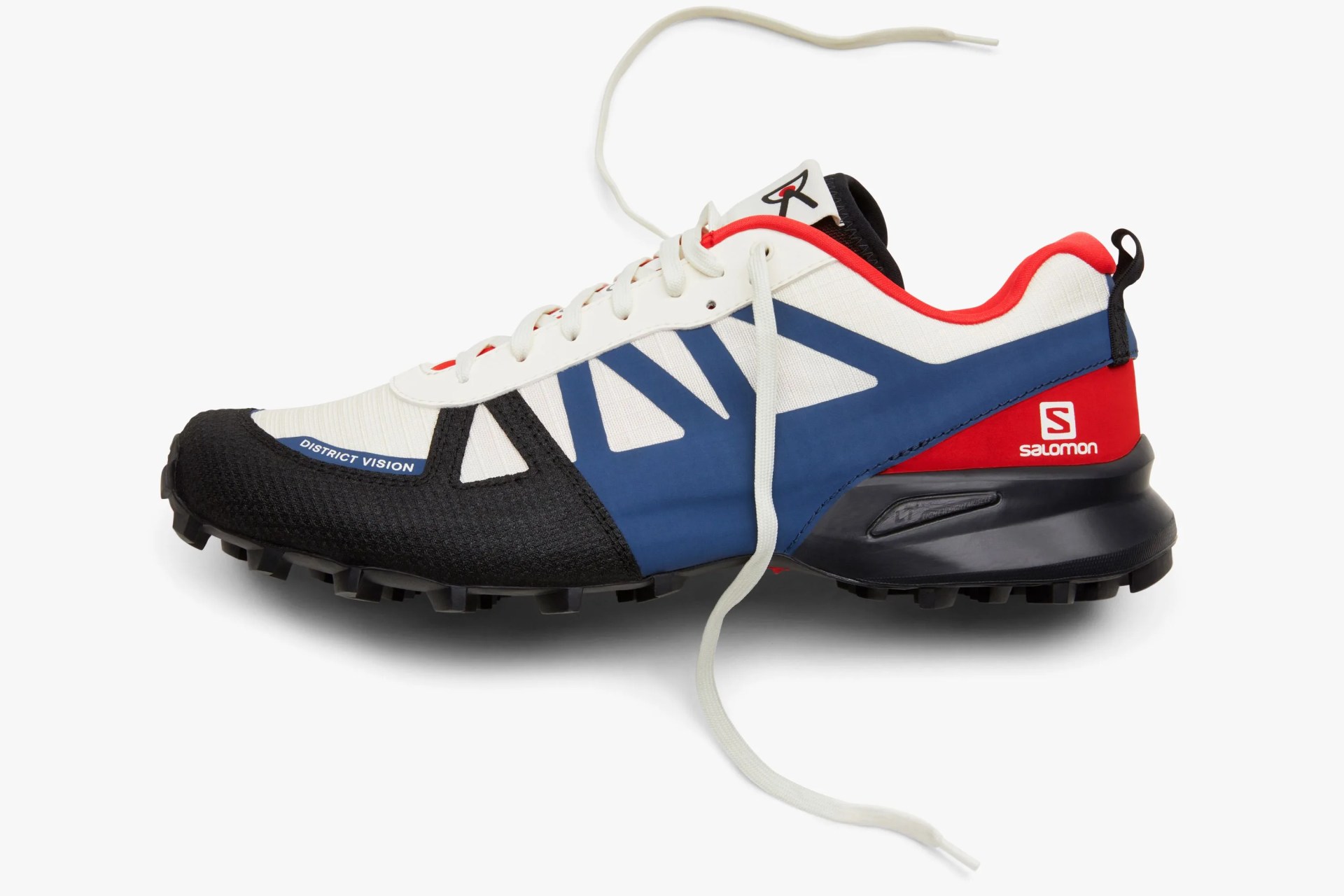 District Vision
District VisionWhen District Vision set out to build their first shoe, a trail runner, they turned to Salomon because they knew standards would be high. District Vision — which embraces mindfulness in everything from running to product design — makes its goods (sunglasses, socks and caps) to the highest degree of quality. The Mountain Racer combines durable Kevlar and shock-absorbing foam with a slightly retro aesthetic, tacking modern tech onto a pattern pulled from Salomon’s archive. — Tanner Bowden
- Weight: 11 ounces
- Outsole: Salomon Contagrip rubber
- Drop: 18 – 26mm
Hyperice Hypervolt
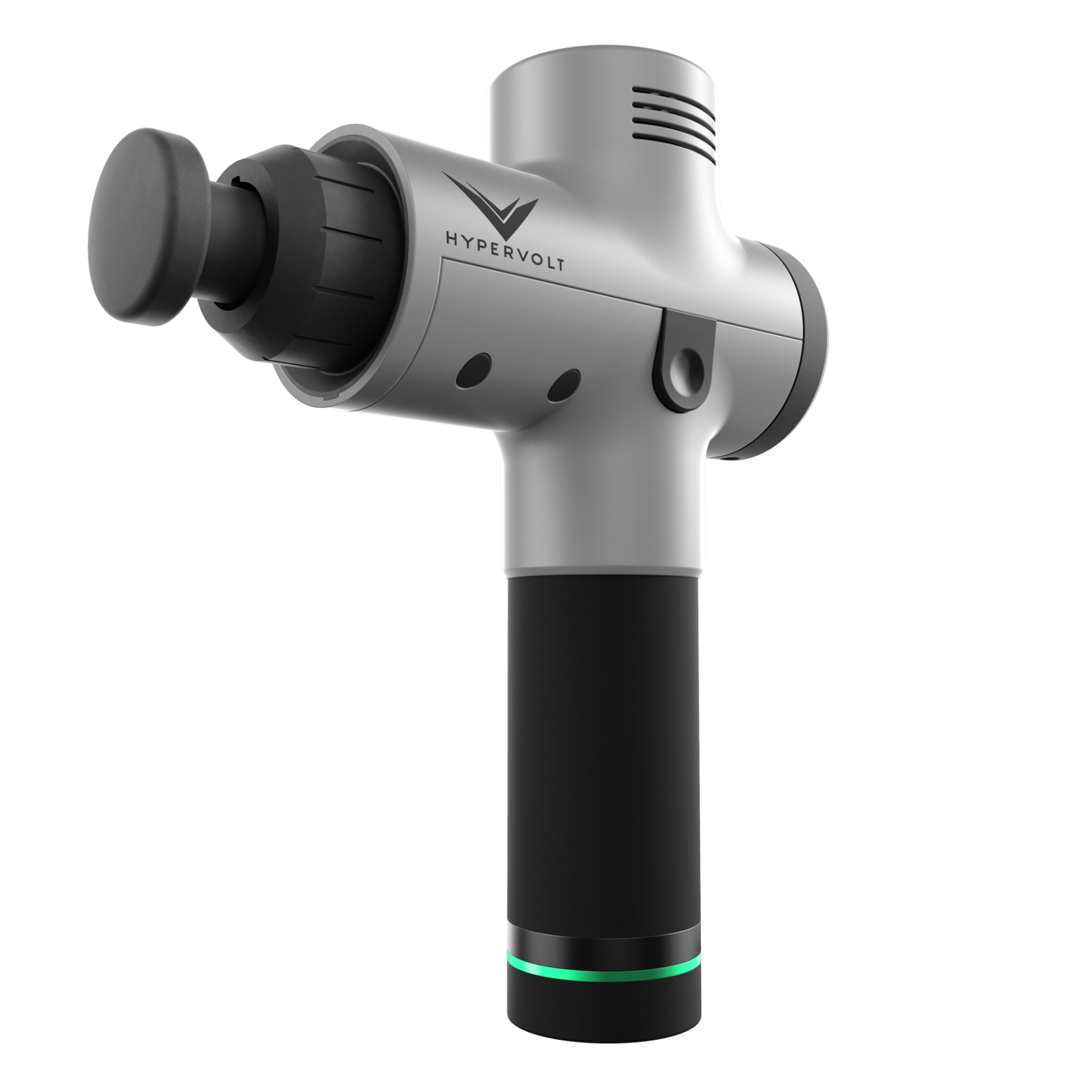 Hyperice
HypericeRecovery is the buzzword of the fitness industry this year. Pro athletes know the benefits of handheld massagers — they reduce pain and improve mobility — but a combination of noise and price has kept them out of the hands of the everyday athlete. Hyperice, a company out of Irvine, California, that’s focused on athlete recovery tools, rewrote that script with the cordless Hypervolt, released in February. There’s now a handheld massager that’s quiet and lightweight and completely different than anything else on the market. — ML
- Speed Settings: 3
- Head Attachments: 4
- Battery Life: 3 hours
Maurten Gel 100
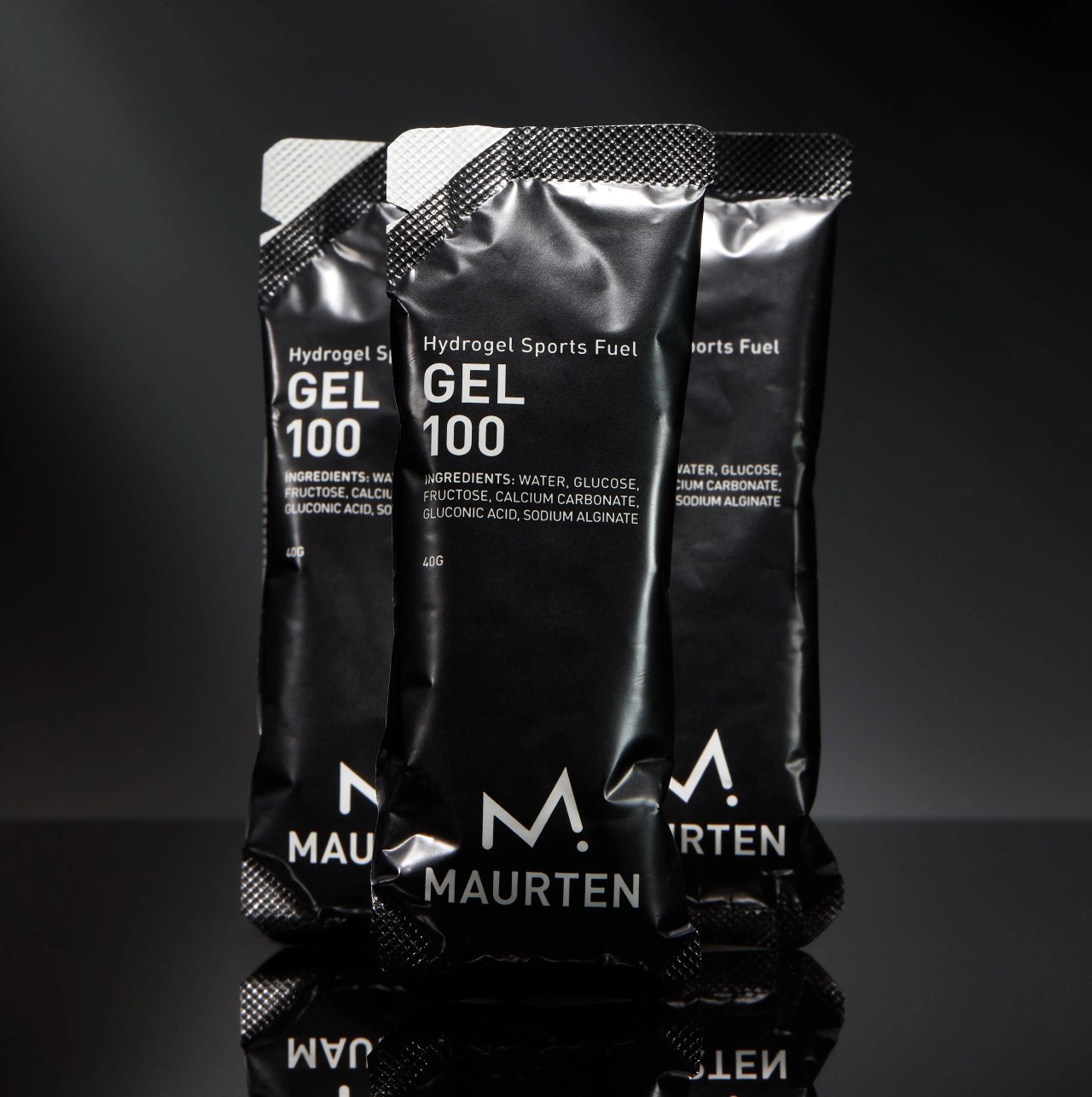 Chandler Bondurant
Chandler BondurantRun anything longer than a half marathon (13.1 miles) and refueling mid-race becomes a necessity. The conundrum: how to eat during a race or lengthy endurance workout to ensure you’re getting the nutrition you need without risking digestive problems. Maurten, a Swedish brand centered on fueling both amateur and elite athletes, set out to solve that problem with a water-based gel that’s easy to digest and offers race-flourishing carbohydrates.
Until now, race-worthy nutrition options have been limited. Most people find it difficult to run with solids in their stomachs. GU and gummies can make your mouth dry, forcing you to drink lots of water. Enter: Gel 100, a viscous-like hydrogel that goes down like liquid and tastes like vanilla. It’s the least offensive of the ones we’ve tried.
“Our hydrogel packs sixty percent carbohydrate content that you actually don’t need to wash down with water, like you would with traditional products in the segment,” Herman Reuterswärd, head of communication at Maurten, says. Gel 100 contains a .08:1 fructose-glucose ratio, instead of the 2:1 ratio found in competitors, which means your body likely doesn’t require as much to refuel. The gel moves water, salt and carbs into the intestines where it’s absorbed faster, and doesn’t get stuck in the digestive system, which is where your typical runner’s GI issues stem from. Plus there are no additional color additives or flavors.
Running stores across the country are stocking up. Athletes like Eliud Kipchoge, who most recently ran a new world record time of 2:01:39 at the Berlin Marathon, races using a mixture of the Gel 100 and Maurten’s drink mixes. It’s not often that someone can shake up the world of energy products, yet Maurten has done just that. — ML
- Calories: 100
- Sodium: 34mg
- Total Carbs: 25 grams
